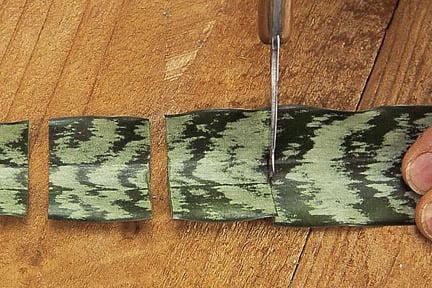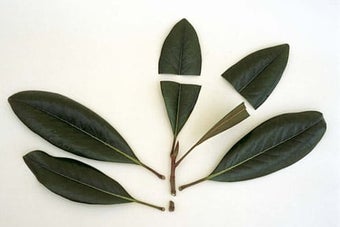
Quick facts
Suitable for - Mostly tender indoor plants and succulents
Timing - Spring to early summer for the best results
Difficulty - Easy to moderate
Suitable for...
Plants such as Streptocarpus, Sansevieria, Eucomis, Sinningia (syn. Gloxinia), Begonia masoniana and B. rex hybrids can be propagated from part-leaf cuttings.
Taking whole leaf is a suitable method of propagation for plants such as Sinningia (syn. Gloxinia), African violet (Streptocarpus syn. Saintpaulia) and Peperomia.
such as Kalanchoe, Echeveria, and Crassula (for example Crassula ovata – the jade plant) are very successful when propagated by leaf cuttings.
Tender sedums (e.g. Sedum rubrum, Sedum hintonii, Sedum morganianum) as well as the hardy herbaceous Hylotelephium spectabile can also be propagated from leaf cuttings.
When to take leaf cuttings
Leaf are best taken early in the from spring to early summer, though some can be propagated any time of year.
How to take leaf cuttings
Always select healthy, young, fully grown foliage. Avoid any damaged, diseased material or leaves affected by pests. Use pot or trays filled with free draining such as seed and cutting compost or mix equal quantities of multipurpose compost and or .
Part-leaf cuttings
Streptocarpus: Select a full-grown leaf and cut in half along the midrib, which should be discarded. Using a make a shallow trench and insert the leaf, cut side down and firm in.
Sansevieria, Eucomis: Cut leaves horizontally into 5cm (2in) pieces and insert lower edge down. Make sure to keep the facing the direction that it was the plant, alternatively cut into shallow chevrons. Insert the cuttings vertically about 2cm (3/4in) deep.
Begonia, Sinningia: Cut across the main veins on the underside. Pin the leaf, cut side down onto the compost. Alternatively, cut the leaf into squares 2.5cm (1in) across each with a main vein. Pin the squares to the surface of the compost.
Aftercare
- Water and allow to drain. Place in a or a clear plastic bag in a light place out of direct sunlight. Leaf cuttings from tropical plants must be kept in high at about 20°C (68°F).
- When plantlets form, remove covers and allow them to grow on until large enough to pot up individually.
Whole-leaf cuttings
Sinningia (syn. Gloxinia), Streptocarpus (African violet, syn. Saintpaulia), Peperomia: Cut the leaves with the stalk intact from the parent plant. Using pots, insert with the base of each leaf just touching the surface and treat as for part-leaf cuttings.
Kalanchoe, Echeveria, Crassula: Leaf cuttings of should be left a day or two to callus (the cut surface thickens) before potting. Insert into pots filled to three-quarters depth with two parts cactus compost to one part fine grit, topped off with fine grit. Do not cover. Place in warm position and good light. Keep the compost just slightly moist.
Problems
The cutting will be prone to rotting off if the is too wet. Water carefully and air the about twice a week and remove any decaying leaves promptly. This will help reduce problems with grey mould.
The development of the plantlets will slow at low temperatures. Keep the cuttings at about 20°C (68°F).
Poor growth can be caused by low light levels. Place in a well lit place but protect from direct sunshine.

